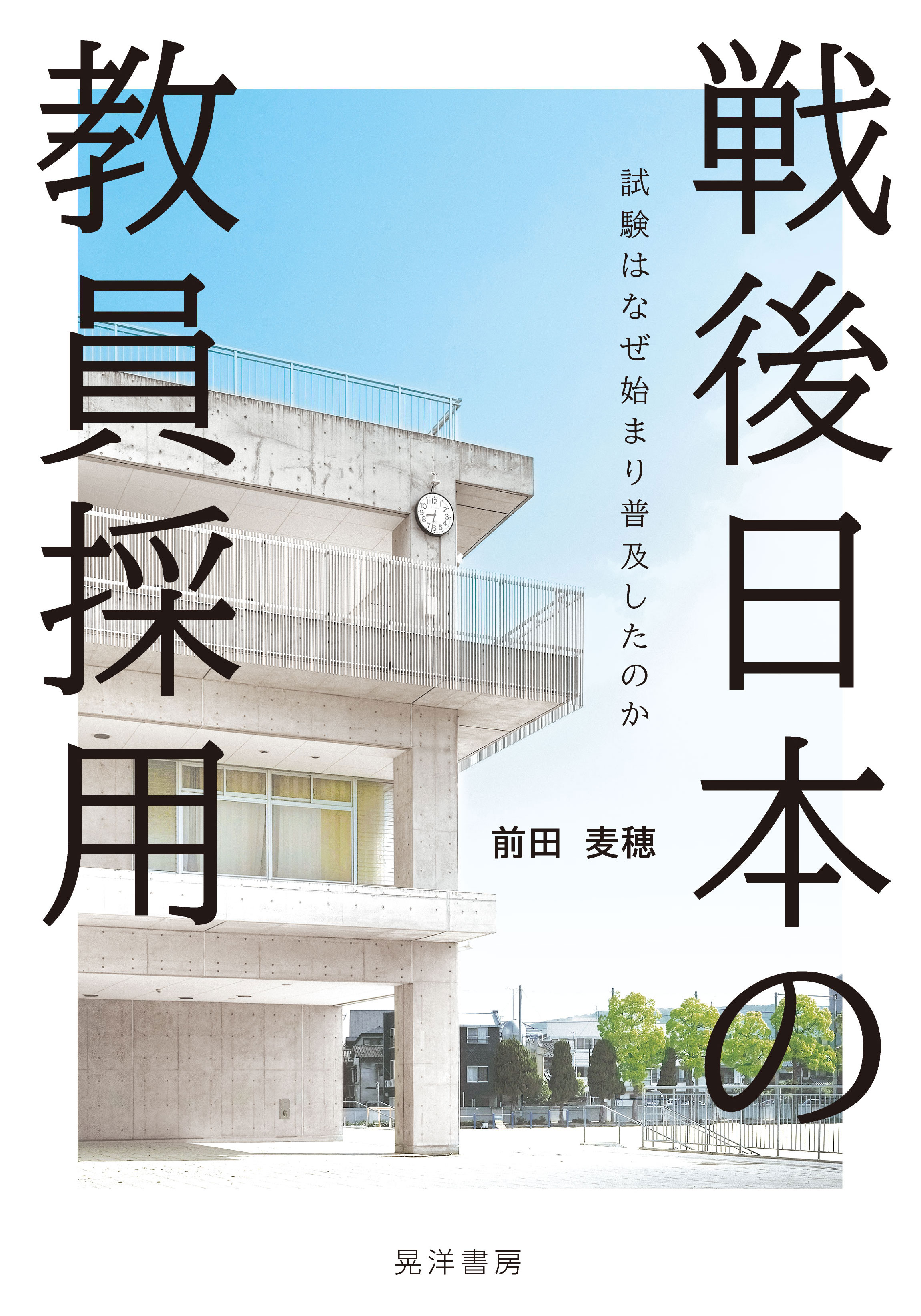
Title
Sengo Nihon no Kyoin Saiyou (Teacher Recruitment in Postwar Japan - Why did the exam start and disseminate?)
Size
192 pages, A5 format
Language
Japanese
Released
February 20, 2023
ISBN
9784771037090
Published by
Koyo Shobo
Book Info
See Book Availability at Library
Japanese Page
You probably have seen news reports about competitive ratios in teacher employment exams declining. Alarmed by the drop in applicants per places (bairitsu: the number of applicants divided by the number of places available), national and local governments have launched a series of reforms aimed at encouraging more people to take the exam.
Until now, educational reformers have debated the timing and method of the exam, but not the exam itself, which is generally accepted as a given. However, the basic question of why we select schoolteachers through the teacher employment exam has rarely been brought to the table.
The author attributes the stalling in educational reform to this trend of accepting the exam’s existence for granted, as well as the failure to understand how the exam was originally created and how it has developed over the years. This book re-examines this fundamental question by tracing the history of the exam.
The book reveals why the teacher employment exam started and disseminated across Japan.
You may feel surprised to learn, from the subtitle of the book, that the exam disseminated across the country gradually rather than being introduced nationwide all at once. The reason was that, when the legal infrastructure was being laid during the early postwar years, legislators never considered it would be necessary to assign applicants an employment exam since a teacher’s license system was already in place.
Contrastingly, the teacher recruitment exam is currently conducted as a given in each prefecture and ordinance-designated city. What happened between then and now to have caused such a change?
It has often been argued that the dissemination of the exam occurred following a legislative change in the mid-1950s. However, the author noted that the exam was being conducted in some regions of Japan even before this legislative change.
Accordingly, for this book, the author strategically selected regional samples so that such regions disperse between the times of pre- and post-legislative change in introducing the teacher recruitment exam, and compared cases. The regions sampled were Tokyo, and the Toyama, Kagoshima, Hyogo, Shimane, and Aomori Prefectures.
The analysis reveals that the legislative change was not, as is often believed, the key factor in the emergence and dissemination of the exam. Two factors played an important role. The first was an endogenous condition: the applicant supply-demand balance in the region concerned. The second was mutual referencing, in which regions referenced the practices of other regions.
The author then applies the dynamic interdependence model to the case study findings to derive the hypothesis that the dissemination of the teacher recruitment exam was driven by endogenous conditions and mutual referencing. Developed by scholars of the public administration, the dynamic interdependence model explains the policy diffusion process between municipalities. The final chapter of the book contains an in-depth presentation of this model and its value.
Thus, this book covers diverse fields and offers value not only to readers specializing in educational administration and sociology of education, but also to those specializing in public administration, politics, historical sociology, and public policy. While the book involves historical research, the author has endeavored to keep the writing as concise as possible. The author hopes that this book will prove useful to aspiring teachers and to anyone interested in the situation teachers currently face or in educational policy or local government.
(Written by: MAEDA Mugiho / March 24, 2023)
Related Info
The 3rd UTokyo Jiritsu Award for Early Career Academics (The University of Tokyo 2022)
https://www.u-tokyo.ac.jp/ja/research/systems-data/n03_kankojosei.html



